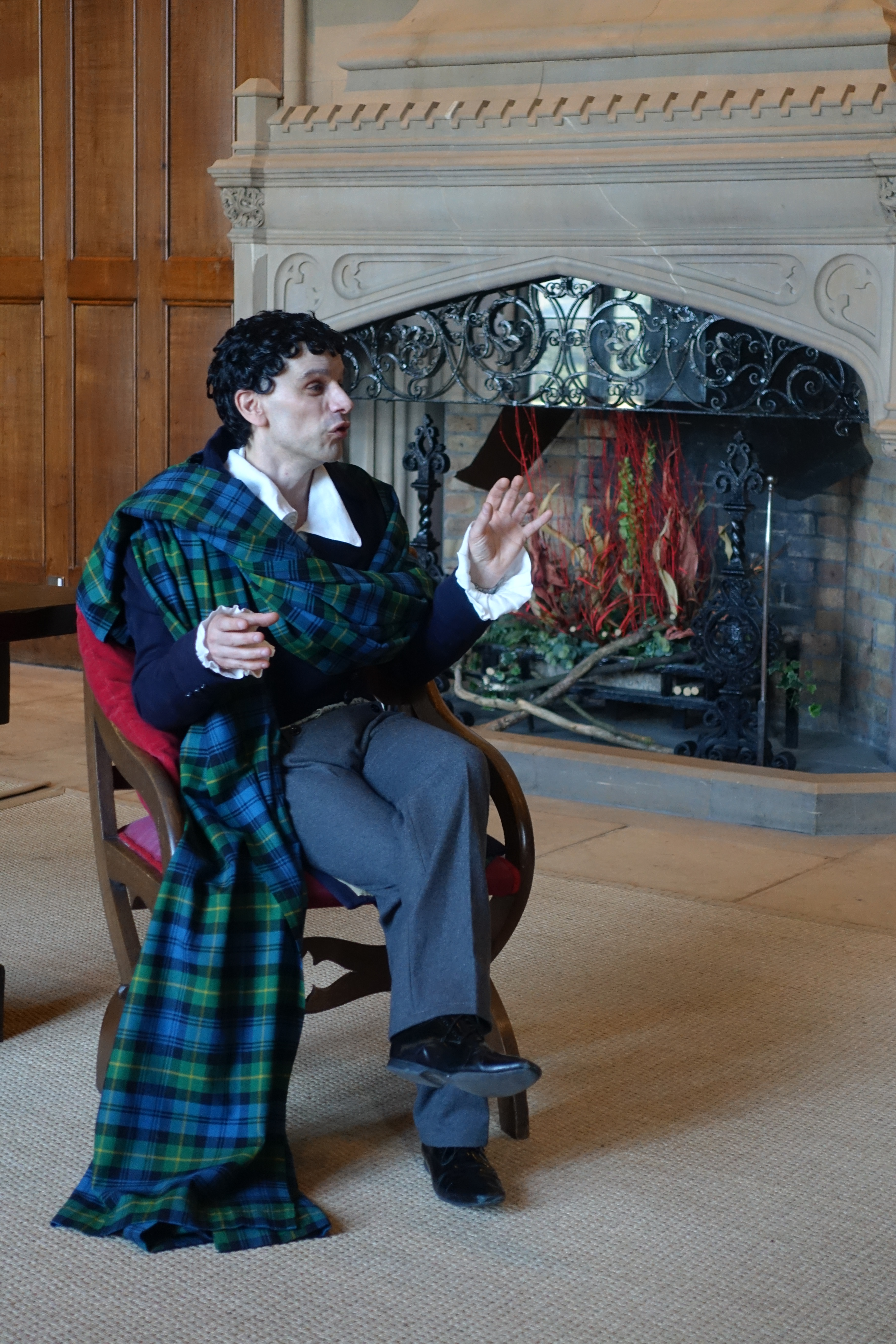This post is extracted from a post that first appeared on Invitation To Events.

Our coach rumbled along the long driveway, past the remains of a 12th century Augustinian priory, coming to a halt in front of a large impressive house.
Stepping off our transportation, we were greeted and led inside to a stone staircase. In days gone by we would have climbed the stairs outside the building, but they have long since gone and that entrance is now a window. Then, our host would have been alerted to our presence by his pet dogs and bear. Today our arrival was announced to our host by a tour guide instead.
No sooner had we all assembled in the rectory hall than our host arrived. Lord Byron himself emerged from his dining room to give us a guided tour of his home and to regale us with stories of his life (and loves).

Other than knowing Lord Byron as one of our prominent poets and father of Ada Lovelace, with a reputation for being “Mad, Bad and Dangerous to Know” I knew little about the man. But on this tour I found out so much.
He told us about his love of animals, especially dogs. He wrote “Epitaph to a Dog” in 1808 in honour of his Newfoundland dog, Boatswain, who had just died of rabies. The dog has a grand memorial in the garden that some of us were able to see later. The collar from Byron’s dog was auctioned in 2017 and showed battle scars from fighting with the poet’s bear. Why did he have a bear? Because the university he attended did not allow pet dogs…….but it said nothing in the rules about bears!

We visited his bedroom and dressing room and heard tales of visitations……..romantic and spectral.
The house is filled with books, art and memorabilia of Lord Byron’s ancestors, friends and family. We saw the famous painting of Lord Byron, hanging prominently over the fireplace in the music room. In other rooms we saw paintings and busts of his mother and his lovers as he told us their tales.
We heard about how Newstead Abbey had been a monastic house from the late 12th century that was dissolved by Henry VIII. How it had been bought by Byron’s ancestor and remained in the family for nearly 400 years. How the generations had built on the site. and how they had let the building fall into disrepair.
We also learnt about the subsequent owners and how they had restored it, keeping Lord Byron’s legacy in the process.
And at the end of the tour, we enjoyed a sumptuous meal in the Victorian kitchen built in 1817 designed by architect John Straw.
Has this made you want to start exploring stately homes and gardens?
Then join City Adventurers for people who want to explore, discover and have adventures.


4 thoughts on “A Guided Tour Of Newstead Abbey By Lord Byron”
Comments are closed.